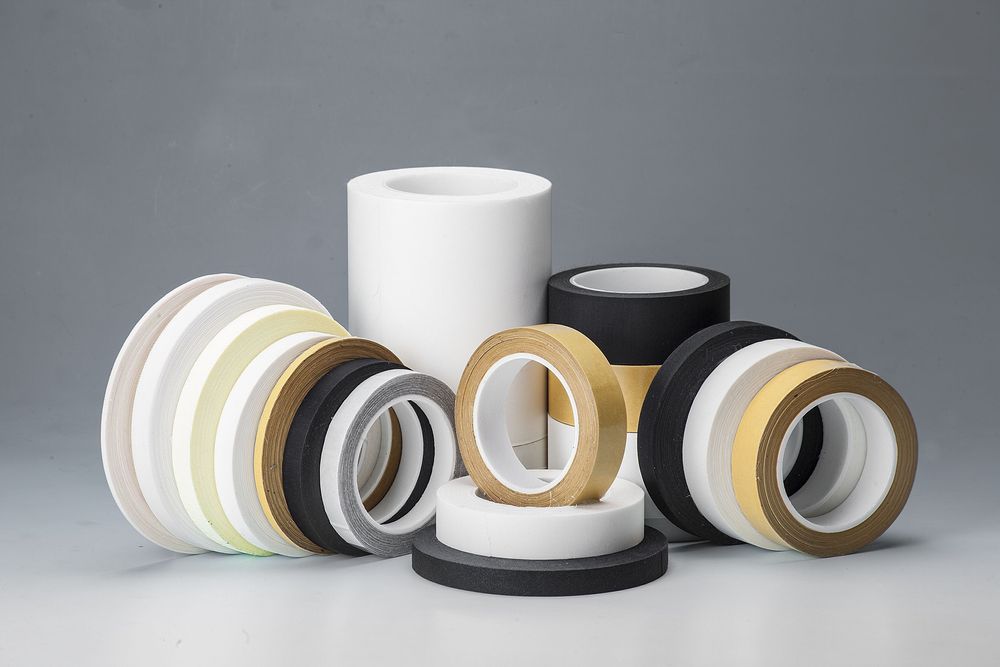
A Quick Guide To Gasket Adhesive Tapes
When it comes to choosing materials to assemble your product, gasket tapes offer benefits for both product design and assembly.
What is gasket tape? Gasket tape is foam with adhesive backing that comes in a roll that can be cut to size to seal out liquids and gases. Compared to using liquid and spray adhesive, gasket tape provides a peel-and-stick solution that simplifies production without sacrificing on quality.
- Unlike rivets and fasteners, gasket tapes make your design less bulky, while also dampening noise and vibration.
- Though glues and spray adhesive provide excellent bonding strength with rubber and silicone gasket material, pressure-sensitive tape requires no drying and curing time. Gasket tape reaches handling strength right after it’s applied to the surface, making production more efficient.
- Gasket tape contributes to a cleaner and safer production environment, with no fumes or special equipment handling.
To bring your product to life with gasket tape, work with an experienced converting partner who can die-cut your gasket tape – or custom make a peel-and-stick gasket that meets your design requirements.
The key to choosing the right gasket tape is finding the right tape structure and adhesive. The best tapes used for gasketing are: very high bonding tape, adhesive transfer tape and double-sided tape. Use this overview to help you narrow your selection so you can finalize your design.
Very high bonding tape
Very high bonding tape is the go-to gasket foam tape. Its bond builds strength over time, while the adhesive and the closed cell foam core maintains its performance when exposed to high temperatures and solvents.
Because of its high-strength acrylic adhesive, very high bonding tape can take the place of rivets and screws, making your product design smoother, more streamlined and lighter – not to mention you can eliminate the rattle and vibrations that accompany loosening screws and rivets.
Along with taking the place of foam or rubber gaskets, this high bonding foam gasket tape can join two dissimilar surfaces, such as: aluminum, steel, glass, plastic as well as painted and powder-coated surfaces.
Adhesive transfer tape and double-sided tape
Though foam gasket tape comes in many widths, thicknesses and material, sometimes it’s better to create a custom gasket tape. Adhesive transfer tape and double-sided tape can be applied directly to sheets of rubber, foam rubber or silicone. Then, through a custom slitting process, the materials are converted into a foam gasket tape.
The material can then be cut to size and die or laser cut to your specific dimensions. When you’re ready to fasten your custom gasket tape to your product, simply peel the backing, and it will instantly adhere to your chosen surface.
How do you choose the best tape for a rubber gasket?
That depends, because the adhesive transfer tape and double-sided tape are available in different chemistries and bonding strengths. This quick overview shows how they compare.
- Rubber gasket tape is cost-effective, adhering to synthetic and natural rubber material more quickly than silicone and acrylic adhesive tapes can. However, the biggest downside is the adhesive in rubber tapes deteriorates after prolonged exposure to sunlight.
- Acrylic gasket tape forms a strong, lasting bond to rubber materials, even when exposed to harsh environments.
- Silicone gasket tape provides strengths and resistance to harsh conditions, but is most effective when bonded with silicone gasket materials.
SRP is proud to be part of the 3M Preferred Converter network. Being a Preferred Converter means we get priority access to the best materials in the industry at the best pricing. We pass these benefits on to our customers.
Learn more about our custom gasket and converter capabilities. Contact SRP and request a quote.
